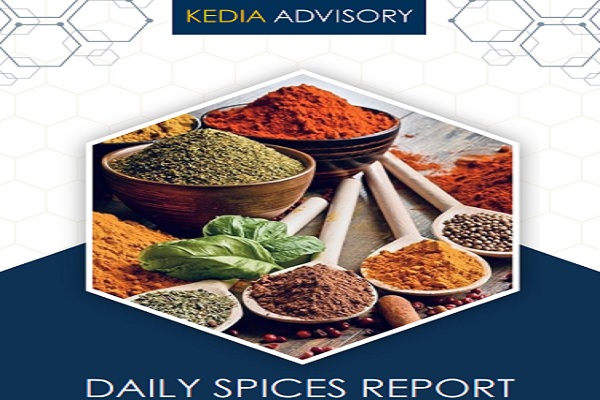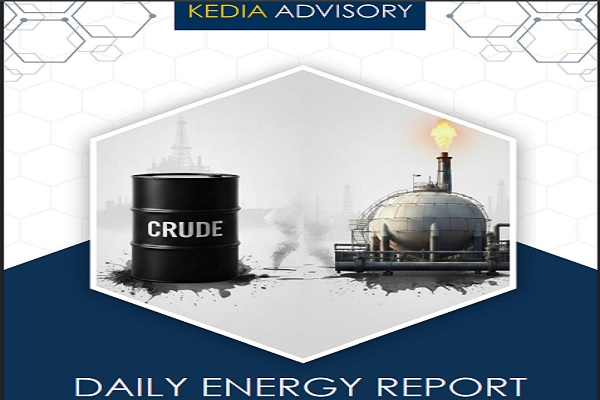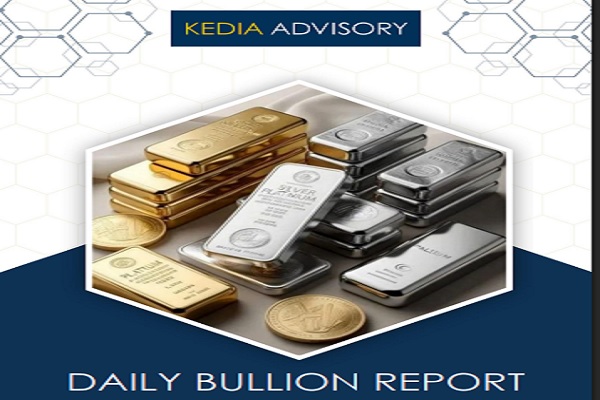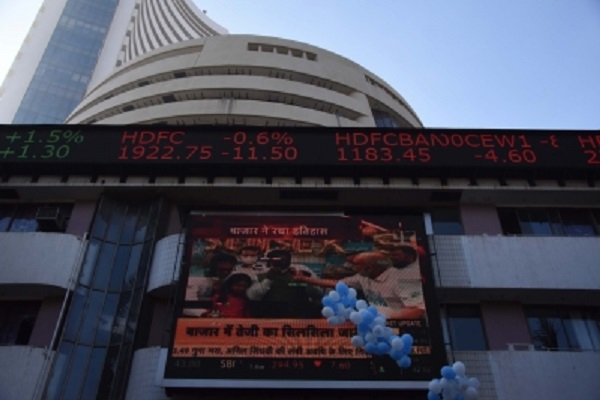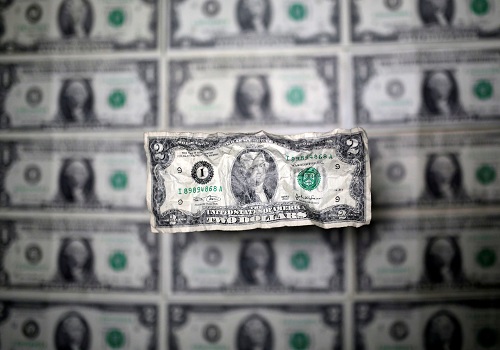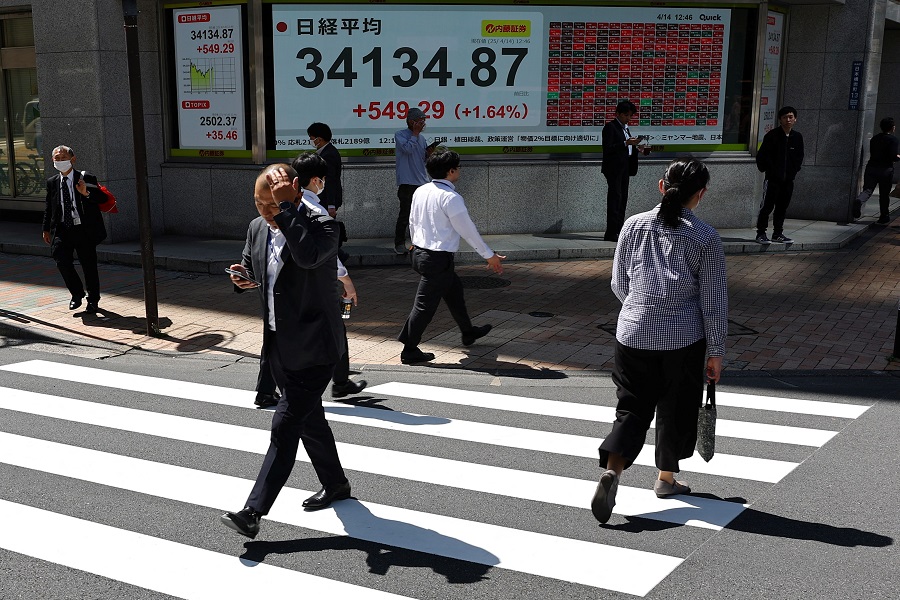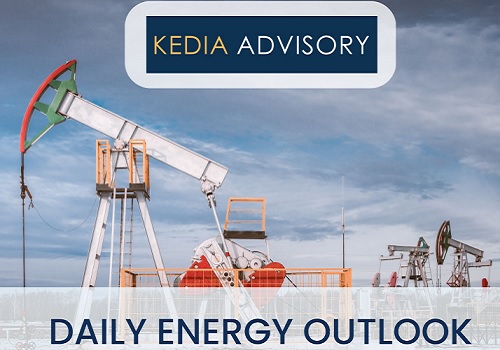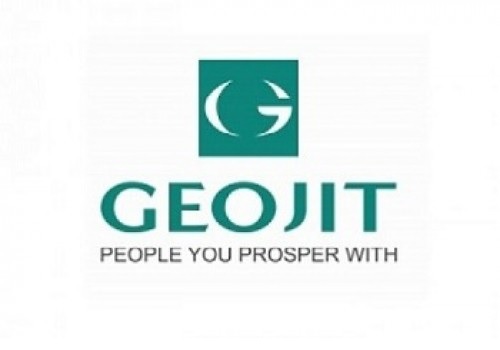Zinc trading range for the day is 263.4-271.2 - Kedia Advisory
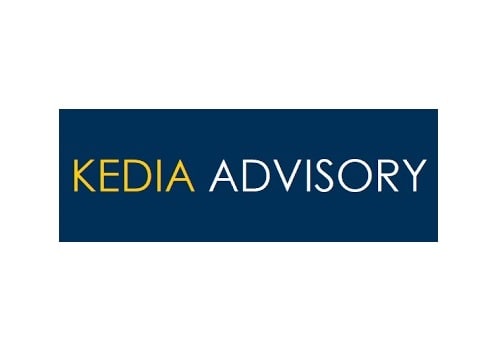
Gold
Gold prices edged lower by 0.07% to settle at 101,262 as traders remained cautious ahead of key developments related to U.S. Federal Reserve leadership. President Trump’s announcement regarding a new nominee to replace Fed Governor Adriana Kugler and potential candidates to succeed Jerome Powell added to the market’s uncertainty. Meanwhile, expectations of a rate cut in September have surged to 90%, fueled by soft economic data including stagnation in the ISM services index and a disappointing jobs report showing only 73K new payrolls in July. Citi raised its gold price forecast to $3,500 per ounce for the next three months, citing deteriorating U.S. growth, elevated inflation from tariffs, and weakening labor market data. The bank noted rising institutional credibility concerns around U.S. statistics and ongoing geopolitical risks related to the Russia-Ukraine conflict as key supportive factors. Physical demand has also improved slightly in Asia, with Indian dealers narrowing discounts to $7 per ounce and premiums seen in China, Hong Kong, Singapore, and Japan amid price pullbacks. According to the World Gold Council, global gold demand rose 3% year-on-year in Q2 2025 to 1,248.8 metric tons, driven by a 78% surge in investment demand. Technically, gold is undergoing long liquidation with a 1.39% drop in open interest to 14,869 contracts. Support is seen at 100,840, below which prices may test 100,415. Resistance is at 101,510, and a move above this could lead to a test of 101,755.
Trading Ideas:
* Gold trading range for the day is 100415-101755.
* Gold steadied as traders awaited updates on potential Federal Reserve leadership changes.
* Market expectations for a rate cut in September have surged to around 90%, following a string of soft economic data.
* The latest ISM report showed an unexpected stagnation in the services sector, accompanied by rising price pressures.
Silver
Silver closed marginally higher by 0.13% at 113,655 as growing expectations of U.S. Federal Reserve rate cuts supported investor sentiment. The July ISM Services PMI highlighted sluggish growth, weakening employment, and persistent price pressures, reinforcing concerns of a cooling labor market, especially after last week's softer payroll data. With markets now anticipating two Fed rate cuts by the end of 2025—possibly beginning in September—silver found further strength. Political uncertainty added to bullish momentum, following the resignation of Fed Governor Adriana Kugler, which raised concerns about the Fed's independence and potential for a more dovish appointee by President Trump. Retail silver investment continues to diverge regionally. Indian retail demand rose 7% year-on-year in H1 2025, driven by strong price expectations, while Europe showed a slow but steady recovery from 2024 lows. Meanwhile, silver ETPs saw robust inflows of 95 million ounces in H1 2025, already surpassing full-year 2024 levels, pushing global holdings to 1.13 billion ounces—just 7% shy of the 2021 peak. The silver market is projected to face a significant deficit for the fifth consecutive year in 2025, supported by record-high industrial demand, particularly from green economy applications. Technically, silver is under short covering with open interest falling by -1.81% to 17,092, while prices rose 151. Immediate support lies at 113,020, below which it could test 112,390. On the upside, resistance is seen at 114,085, with further strength likely to push prices toward 114,520.
Trading Ideas:
* Silver trading range for the day is 112390-114520.
* Silver gains as expectations for Federal Reserve rate cuts continued to build.
* Markets are now pricing in two Fed rate cuts by year-end, with the first possibly arriving in September.
* Fed’s Daly echoed this dovish tone, citing labor market softness and the limited inflationary impact of Trump’s tariffs.
Crude oil
Crude oil prices declined by -0.61% to 5,713 amid a mixed backdrop of geopolitical developments, inventory data, and supply-side adjustments. The market initially found support from reports of a significant U.S. crude inventory drawdown, but positive signals from a U.S. envoy in Russia regarding ceasefire talks with Ukraine weighed on sentiment. Adding to the bearish tone were concerns surrounding oversupply, as OPEC+ announced a substantial production increase of 547,000 barrels per day (bpd) for September—ending its recent output cuts earlier than expected. On the demand side, bullish sentiment was briefly supported by API data showing a 4.2 million barrel drop in U.S. crude stockpiles, well above expectations. Official EIA figures also confirmed a 3 million barrel decline in crude inventories, while gasoline stocks fell by 1.3 million barrels and distillate stocks by 565,000 barrels. However, a 453,000-barrel increase at the Cushing, Oklahoma delivery hub and a 213,000 bpd rise in refinery runs pointed to a more nuanced supply-demand balance. Geopolitical tensions remain elevated, with U.S. President Trump threatening higher tariffs on India over continued Russian crude purchases, adding another layer of market risk. Technically, crude oil is under fresh selling pressure as open interest surged by 11.11% to 9,589, indicating new short positions. Immediate support is seen at 5,641, with further downside possible to 5,568. Resistance is located at 5,826; a breakout above this could push prices toward 5,938.
Trading Ideas:
* Crudeoil trading range for the day is 5568-5938.
* Crude oil prices rebounded supported by concerns over potential supply disruptions.
* Trump is to impose an additional 25% tariff on goods from India due to Russian oil purchases
* Crude inventories fell by 3 million barrels to 423.7 million barrels in the week ended August 1, the EIA said.
Natural gas
Natural gas prices edged higher by 1.69% to settle at 270.5, supported by tightening supply conditions, rising LNG export activity, and strong weather-driven demand. Forecasts indicating hotter-than-normal temperatures through late August have increased the need for air conditioning, thereby raising natural gas consumption in power generation, which constitutes over 40% of the U.S. electricity mix. Production constraints also supported prices, with daily output falling to a four-week low of 106 billion cubic feet per day (bcfd), nearly 3.7 bcfd below the record highs seen in late July. Meanwhile, LNG feedgas demand strengthened, averaging 15.9 bcfd in early August, up from 15.5 bcfd in July, driven by the resumed operations at Freeport LNG in Texas and record intake of 3.2 bcfd at Venture Global’s Plaquemines facility in Louisiana. On the inventory front, U.S. utilities injected 48 billion cubic feet of gas into storage for the week ending July 25, exceeding market expectations of a 38 bcf build. The EIA, in its Short-Term Energy Outlook, expects U.S. dry gas production to hit 105.9 bcfd in 2025 and 106.4 bcfd in 2026, with LNG exports projected to reach 14.6 bcfd and 16.0 bcfd respectively. Technically, the market is witnessing short covering as open interest dropped by 6.57% to 33,738 while prices rose 4.5. Support is seen at 262.6, with further downside risk to 254.7. Resistance is at 274.9, with a break above potentially testing 279.3.
Trading Ideas:
* Naturalgas trading range for the day is 254.7-279.3.
* Natural gas climbed lifted by a drop in daily output, rising gas flows to LNG export plants.
* Daily output drops to three-week low, impacting supply
* LNG export feedgas increases after plant outages end
Copper
Copper prices edged up by 0.31% to settle at 883.4, supported by expectations of U.S. interest rate cuts and continued supply concerns, especially after a mine suspension in Chile, the world's top copper producer. Weaker U.S. jobs data has raised the probability of a Federal Reserve rate cut in September to 86.5%, with around 56 basis points of easing anticipated by year-end. Market sentiment was also buoyed by hopes of a U.S.-China trade breakthrough, which could stimulate demand from China, the world’s largest metals consumer. On the inventory front, LME copper stocks continued rising, hitting a nearly two-year high. However, SHFE copper inventories declined 1.2% to 72,543 metric tons, the lowest in over seven months. COMEX copper inventories rose to 261,180 mt, the highest level since February 2004. Despite this, international inventories showed a slight drop of 772 mt to 10,844 mt. China's unwrought copper imports rose 8.7% in June to 464,000 mt, reversing a two-month decline, amid a global reshuffling of inventories towards the U.S. in anticipation of a 50% tariff set to take effect from August 1. Meanwhile, the global refined copper market shifted into a 97,000 mt surplus in May, compared to an 80,000 mt deficit in April, reflecting improving supply conditions. Technically, the copper market is under short covering, with open interest down 1.21% to 7,130 while prices rose 2.7. Support is at 880.9, with further downside to 878.2, while resistance is pegged at 885.6, and a break above may lift prices toward 887.6.
Trading Ideas:
* Copper trading range for the day is 878.2-887.6.
* Copper gains supported by hopes for U.S. rate cuts and persistent supply concerns.
* Also helping the market were hopes for easing in a U.S.-China trade war after Trump said they were close to a trade deal.
* Copper inventories in warehouses monitored by the Shanghai Futures Exchange fell 1.2 % from last Friday.
Zinc
Zinc prices rose by 1.19% to settle at 268.2, driven by tightening supply conditions and a softer U.S. dollar following weaker-than-expected U.S. jobs data, which strengthened expectations of a Federal Reserve rate cut in September. Chinese smelters are under growing pressure to reduce production due to excess capacity and weakening demand, adding to bullish sentiment. Furthermore, adverse weather conditions in South China have disrupted output, while major global producers are also scaling back. Teck Resources reported a 20% year-on-year decline in mined zinc output at its Red Dog mine, and Nyrstar plans to cut its Australian smelter output by 25% this year due to uneconomical treatment charges stemming from ore shortages. However, upside momentum was capped by lingering demand concerns, particularly from China, where manufacturing activity contracted in July, with new export orders falling for the fourth consecutive month and job cuts seen across factories. Despite this, sentiment remains supported by China’s efforts to stimulate growth in key industrial sectors like autos, electricals, and machinery. The announcement of a massive CNY 1.2 trillion hydroelectric power project is expected to lift steel and zinc demand due to galvanization needs. Moreover, the global zinc market posted a deficit of 44,100 tons in May, swinging from a surplus of 17,300 tons in April, according to ILZSG data. Technically, zinc market is under fresh buying pressure, with open interest rising 4.82% to 3,240. Immediate support lies at 265.9, with further downside risk to 263.4. Resistance is seen at 269.8, and a breakout could push prices to 271.2.
Trading Ideas:
* Zinc trading range for the day is 263.4-271.2.
* Zinc gains as zinc supply is tightening as Chinese smelters face pressure to cut production due to capacity outpacing demand.
* However upside seen limited as demand concerns lingered as China's manufacturing activity contracted in July.
* Zinc inventories in warehouses monitored by the Shanghai Futures Exchange rose 3.9% from last Friday.
Aluminium
Aluminium prices climbed by 1.45% to settle at 255, supported by expectations of tighter global supply and improving demand prospects from China. Market sentiment was buoyed by Beijing's pledge to maintain loose fiscal and monetary policy, reinforcing infrastructure-focused investments like the recently announced CNY 1.2 trillion hydroelectric dam, aimed at revitalizing industrial growth. On the supply side, Chinese aluminium production in June 2025 dipped by 3.23% month-on-month. However, overall production remained robust, rising 3.4% year-on-year to 3.81 million metric tons, with cumulative output in the first half of 2025 reaching 22.38 million tons — a 3.3% increase from the same period last year. Despite high operating capacity, China’s aluminium exports in June declined to 489,000 tonnes from May’s 547,000 tonnes, indicating some softening in overseas demand. Japanese market dynamics also showed signs of weakness, with premiums for Q3 aluminium shipments falling 41% to $108 per metric ton amid ample supply and subdued demand. Inventory levels at Japan’s major ports fell by 4.3% in June to 316,700 tonnes. Meanwhile, SHFE-monitored aluminium stocks rose 1.5% from the previous week. Technically, the aluminium market is witnessing fresh buying, as reflected by a marginal 0.05% increase in open interest to 4,383. Prices rose 3.65, and the metal is finding immediate support at 252.7, with further downside likely at 250.3. Resistance is pegged at 256.3, and a move above that could see prices testing 257.5.
Trading Ideas:
* Aluminium trading range for the day is 250.3-257.5.
* Aluminium gains amid the outlook of lower supply and improved demand from China.
* Markets recalibrated their expectations of fiscal support from the Chinese government, limiting forecasts of industrial expansion.
* Aluminium inventories in warehouses monitored by the Shanghai Futures Exchange rose 1.5% from last Friday.
Turmeric
Turmeric prices settled higher by 1% at 13,300, driven by short covering after a recent decline amid expectations of increased sowing due to favourable monsoon conditions. Arrivals rose modestly to 13,660 quintals from 11,940 quintals in the previous session, reflecting a slight increase in market availability. Although the turmeric acreage for the 2024–25 season has expanded by 10% to 3.30 lakh hectares, the actual production may not see a proportionate rise due to concerns over untimely rains affecting yield, especially in regions like Nanded where crop rot and smaller rhizomes are prevalent. Despite higher sowing, the downside in prices remains limited due to overall lower yield expectations and quality concerns. New crop yields are estimated to be 10–15% lower compared to last season’s production of 10.75 lakh tonnes. However, strong demand persists in physical markets like Duggirala, where new arrivals are fetching higher prices due to better quality, helping support overall sentiment. Turmeric exports provided a bullish cue, rising 8.37% to 34,162.28 tonnes during April–May 2025 compared to the same period in 2024. A significant month-on-month increase of 28.41% was recorded in May 2025 exports over April. Technically, the market is in short covering mode as open interest dropped by 6.68% to 11,385 while prices rose 132. Immediate support is at 13,162, with further downside limited to 13,024. Resistance is seen at 13,386, and a breakout above could push prices toward 13,472.
Trading Ideas:
* Turmeric trading range for the day is 13024-13472.
* Turmeric gained on short covering after prices dropped due to expected increase in acreage.
* Turmeric acreage is expected to increase by 15-20% this season, supported by low competitive crop prices.
* In April 2025 around 14,956.80 tonnes were exported as against 14,109.10 tonnes in April 2024 showing a rise of 6%.
* In Nizamabad, a major spot market, the price ended at 13834.6 Rupees dropped by -0.64 percent.
Jeera
Jeera futures declined by 1.56% to settle at 18,910, pressured by weak domestic and export demand post the peak retail season. Traders noted that the end of retail buying and subdued interest from foreign buyers led to the price drop. Ample supply and lackluster export activity further dampened sentiment, with most current export demand being fulfilled from existing stockpiles. Farmers are reportedly holding around 20 lakh bags of jeera, of which only 3–4 lakh bags are expected to be traded before the season ends, potentially leaving a carryover stock of 16 lakh bags. Production for the current season is estimated at around 90–92 lakh bags, slightly lower than last year's 1.10 crore bags. Gujarat is expected to contribute 42–45 lakh bags, while Rajasthan may produce 48–50 lakh bags. While geopolitical tensions in Syria, Turkey, and Afghanistan have curtailed their jeera supplies, Indian exports have not seen a significant boost. In China, production estimates have been revised down to 70–80 thousand tonnes from earlier projections of 1 lakh tonnes due to adverse weather. Jeera exports during April–May 2025 fell sharply by 27.07% to 42,925.74 tonnes from 58,860.98 tonnes in the same period last year. However, May 2025 exports rose 11.26% YoY and 17.68% MoM, offering some recovery signs. Technically, the market is under long liquidation with a 6.74% drop in open interest to 4,110. Support is seen at 18,780, with further downside possible to 18,640. Resistance lies at 19,130, and a break above could push prices toward 19,340.
Trading Ideas:
* Jeera trading range for the day is 18640-19340.
* Jeera prices dropped due to weak domestic post retail season.
* Only 3-4 lakh bags are expected to be traded by the end of the season, leaving a carry-forward stock of about 16 lakh bags
* Total arrivals witnessed a marginal increase to 12,000 bags (55 kg each) as against 11,800 bags on the previous day.
* In Unjha, a major spot market, the price ended at 19464.05 Rupees dropped by -1.08 percent.
Views express by all participants are for information & academic purpose only. Kindly read disclaimer before referring below views
